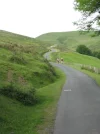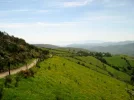yukonchick
New Member
Hello all,
I am a Canadian woman, now 59, who will be doing the Camino in 2014 when I am 61. My concerns are not so much the walking, but the heights and inclines as I do have a fear of heights. I've heard horror stories about the Pyrenee crossing (Jane Christmas calls it Hell in her book).
I have lived in mountainous regions of Alaska and the Yukon (Canada), so can handle heights in certain circumstances - but if the incline is so steep as to be like the Gold Rush Chilkoot, straight UP with the possibility of sliding down and into oblivion, then I have to rethink.
I'm the one who went to the pyramids in Mexico only to be unable to climb the steps due to the steepness.
I'm the one who tried to do the Chilkoot, only to turn back after 5 steps as it was too steep and I got vertigo.
Having said that, I have been to the top of the major Towers in the world, lived on a 32nd floor, etc. and they were OK.
But if there is no path, no road, and if I can see Down Below with the incline so steep the mud is touching my nose, I don't stand a hope in hell. If the incline is out in the open, like mountain climbing, I'd like to know!
I have no problem hiking hills and train on a treadmill at the top incline....but it's Vertigo I'm most worried about.
Can someone comment on the incline, vertigo, and whether anyone was paralyzed by it???
Thanks,
Yukon Chick
0-5 posts
Posts: 1
Joined: 07 Apr 2012, 11:25
Location: Yukon, Canada
Private message
I am a Canadian woman, now 59, who will be doing the Camino in 2014 when I am 61. My concerns are not so much the walking, but the heights and inclines as I do have a fear of heights. I've heard horror stories about the Pyrenee crossing (Jane Christmas calls it Hell in her book).
I have lived in mountainous regions of Alaska and the Yukon (Canada), so can handle heights in certain circumstances - but if the incline is so steep as to be like the Gold Rush Chilkoot, straight UP with the possibility of sliding down and into oblivion, then I have to rethink.
I'm the one who went to the pyramids in Mexico only to be unable to climb the steps due to the steepness.
I'm the one who tried to do the Chilkoot, only to turn back after 5 steps as it was too steep and I got vertigo.
Having said that, I have been to the top of the major Towers in the world, lived on a 32nd floor, etc. and they were OK.
But if there is no path, no road, and if I can see Down Below with the incline so steep the mud is touching my nose, I don't stand a hope in hell. If the incline is out in the open, like mountain climbing, I'd like to know!
I have no problem hiking hills and train on a treadmill at the top incline....but it's Vertigo I'm most worried about.
Can someone comment on the incline, vertigo, and whether anyone was paralyzed by it???
Thanks,
Yukon Chick
0-5 posts
Posts: 1
Joined: 07 Apr 2012, 11:25
Location: Yukon, Canada
Private message






















